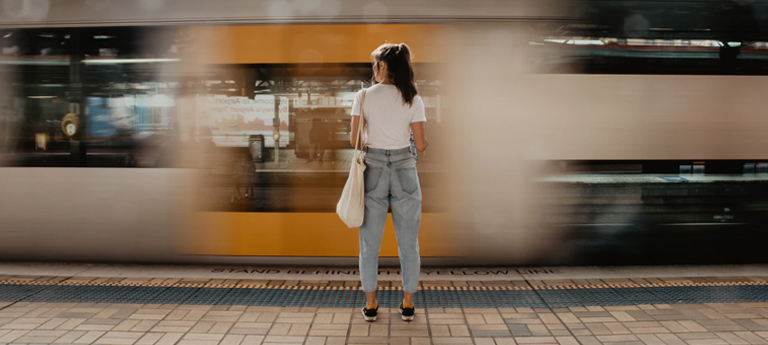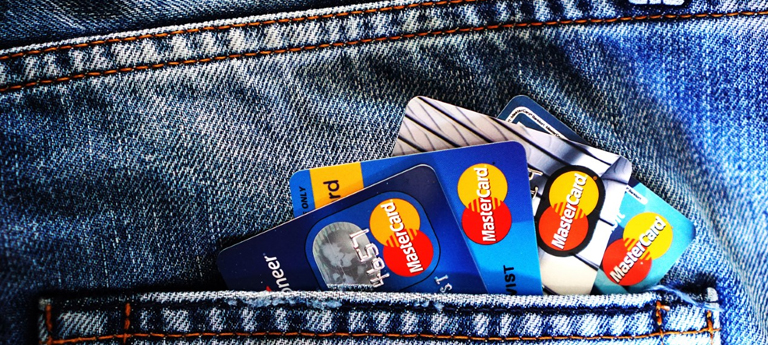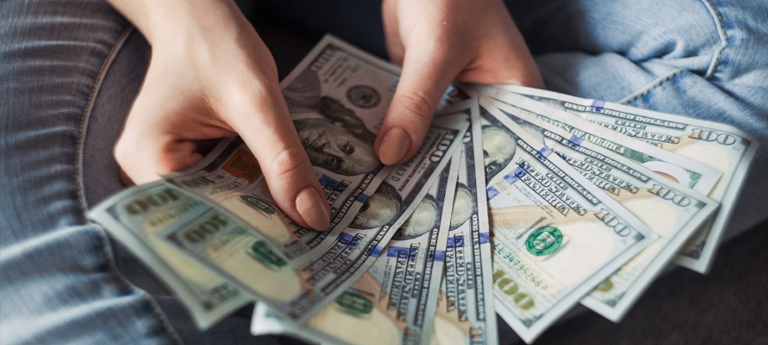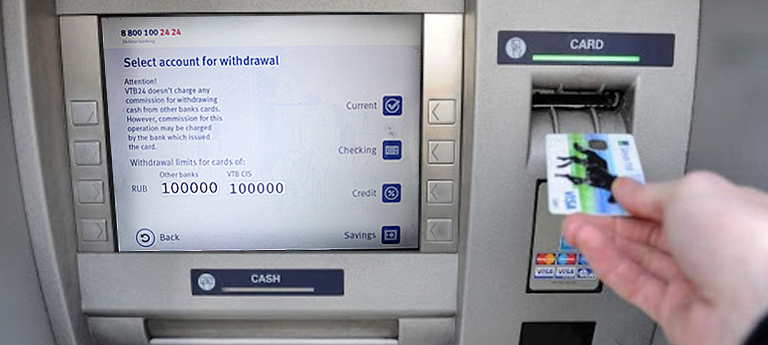We get asked all the time about how to carry money on the Trans-Siberian. And there is not one simple answer, it depends on the needs of the individual traveller and the route travelled.
As a general rule taking cash out from an ATM with a credit or debit card is more convenient than exchanging cash into local currency but it is important to have both options available to you. We recommend a combination of cash and card as the best policy when travelling the Trans Mongolian/Siberian route.
The only currencies you should take on this trip are US Dollars or Euros. Australian and New Zealand dollars cash notes are not accepted for exchange in Mongolia or Russia. You can purchase Russian Roubles and Chinese Yuan prior to the trip but you will not get a good rate of exchange for these currencies from Australian or New Zealand banks so don’t take too much.
It is important that the notes you take are clean and relatively new and larger denominations such as US$50 and US$100 notes are preferred. If you are getting US dollars or Euros from a bank or Bureau de Change prior to leaving home make sure the bills they give you are in good condition. This cash can then be exchanged for local currency in banks and some hotels.
ATMs are convenient for cash advances and widely available in hotels, stations and in city streets. Try not to be too reliant on one card – if there is a problem with your personal card it will be impossible to rectify it away from home. In fact it may be a good idea to ask for a new card to be issued by your bank before your trip. Also make sure your bank is informed in advance that you are planning this trip. Unexpected cash withdrawals from an ATM in Russia or China might trigger a fraud warning and the freezing of your account.
Travel Money cards marketed by banks and airlines have some advantages in terms of security as they are stand alone products and therefore not connected with your normal bank account. If a travel money card is stolen it won’t have negative implications for your everyday accounts. And in theory these cards are more easily replaced if lost or stolen overseas.
Beware however; the exchange rates these cards offer are diabolically bad!
CHINESE “Yuan”
For most of our clients the journey will start in Beijing and head north to Mongolia. So first up you will need some Chinese money. The official currency of mainland China is the Renminbi – abbreviated to CNY or RMB. Yuan is a unit of renminbi; however Chinese currency is generally known as the “yuan”, particularly in countries outside of China. You can get some before you leave
home, or on arrival. Personally, I like to have some cash on me before I leave but many travellers opt to exchange or withdraw funds on arrival for a better exchange rate.
MONGOLIAN “Tugrik”
It is difficult to get Mongolian Tugrik outside of Mongolia and once you leave Mongolia it is impossible to change back. If arriving by train from China or Russia you will need to arrange money on arrival – either by visiting an ATM to withdraw cash or going to a bank to exchange US Dollars or Euros.
If you arrive on a weekend then the banks will be closed. There are quite a number of ATMs in Ulaanbaatar city centre and you can make larger purchases with US Dollars or Euros or pay for a meal with a credit card. But once you leave the city it’s a cash economy in the countryside.
Our clients are often surprised at the cost of being in Mongolia in contrast to China and Russia; it can be quite expensive by comparison. And because the shopping here is quite unique and of a high quality don’t be surprised if you spend more than anticipated!
Can you take Roubles into Russia?
Roubles can be purchased in Australia/NZ or on arrival in Russia. If you want to arrange them in advance you can order them through Travelex online. The exchange rate will be better if you wait to exchange US or Euro locally but it is very convenient having some in your pocket before you leave. Many ATMs in Russia will dispense a maximum of 5000 Roubles which is around AU$100 value; plenty of money for a day in Siberia but not necessarily in Moscow/St Petersburg.
Credit cards are widely accepted for purchases and in restaurants but always (politely) decline if they offer you a conversion to Australian dollars at point of payment – this is always more expensive for you. Changing money in Russia (US Dollars or Euro) is generally less convenient than withdrawing from an ATM. Most hotels have one in the reception area but they don’t generally offer currency exchange at the desk.
Probably stating the obvious here but never change money with anyone on the street – this is invariably a scam.
How much money will I need on the trans-Siberian?
Tricky Question!
On this journey you will see big differences in the cost of living, not just between countries but also within regions of the same country. For example Russia’s two main cities are some of the most expensive in Europe; costs in Moscow or St Petersburg can be four or five times those of rural areas in Russia.
Food is generally inexpensive if you stick to mid-range restaurants and supermarket shopping for long distance trains. Meals purchased on the trains are slightly more costly but if you mix and match
it’ll keep things interesting. Beer and Vodka is cheap in Russia, but imported wine is not. Some find dining options in major cities can be a pleasant surprise in terms of cost but restaurants inside 4-5* hotels will always be inflated.
Public transport is very affordable as are museum entries in general. Some private touring is costly particularly if a driver and guide are with you for an extended period. On our inclusive itineraries we include the must- see places when it is not straight forward to arrange on the spot locally. For example, the Kremlin in Moscow gets extremely crowded during the summer months. It is well worth the money for us to arrange a visit with private guide and pre-purchased tickets for the Armoury too. In contrast, the Hermitage Museum in St Petersburg is quite easy to visit yourself with an online ticket. We can give you instructions to help avoid the big queues, it just requires a little advance planning.
Mongolia is expensive compared with neighbouring China and Russia. The tourism season is short and there is very little infrastructure outside the capital Ulaanbaatar. All touring is by private vehicle with driver and guide, and ger accommodation is on a full board basis. So while it is not really a cheap destination much of your essential costs are covered by your trip price. But then consider that the shopping is really good…you may spend more there than anticipated.
Beijing is one of the more expensive cities in China, but it is still a great bargain for most Western travellers. Transport and food are inexpensive – hotels too. However, be careful of the wide variety of scams that operate in the city. From the foreign restaurant menu to taxi price fixing, be sure to have google ‘Beijing tourist scams’ and be informed before you arrive.
Daily Budget?
Some days on this trip you will hardly spend any extra money (e.g. while on the long distance trains) and other days you will make up for it with a fancy meal and drinks at a bar in Moscow. Everyone has different budgets and spending habits, but as an overall guide we would say roughly allow US$50-100 per person per day for spending money will cover most travellers.





